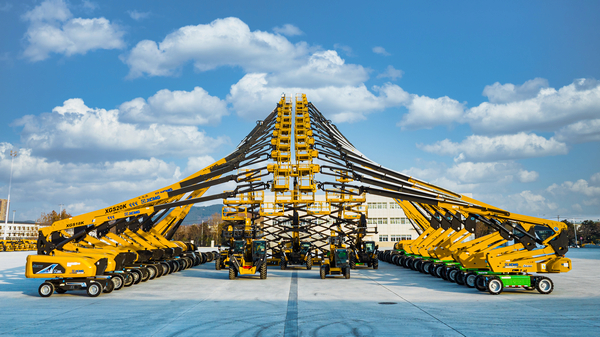Understanding key terms is essential for training and daily operation of aerial work platforms (AWPs). Below are some commonly used phrases in the industry:
• Live-line work: Performing maintenance or operations on high-voltage electrical equipment while it remains energized.
• Insulated glove operation: Work involving direct contact with live electrical components while using insulated gloves and other protective equipment.
• Insulated gloves: Made from synthetic rubber or plastic, these gloves prevent electrical shock to the hands.
• Insulated boom lift: A truck-mounted lift equipped with an insulated articulating boom and one or more insulated buckets, used to elevate workers to live-line work areas.
• Safe distance: The minimum clearance required to ensure electrical insulation and prevent accidental contact with live conductors.
• Live-line work tools: Specialized tools, machinery, and equipment designed for safe use in live-line operations.
• Hazard points: Identified risk factors based on the work environment, operational methods, personnel conditions, and equipment status that could lead to human errors or accidents.
Safety Guidelines for Aerial Work Operations
Environmental Requirements
1. Work should only be performed in favorable weather conditions. Operations are prohibited during strong winds (above level 5), heavy snowfall, or dense fog.2. In exceptional cases where emergency live-line repairs must be conducted in adverse weather, the work supervisor must assess the meteorological conditions, discuss potential hazards with the team, and implement strict safety measures. Approval from higher management is required before proceeding.
Safe Distance Requirements
1. Workers inside the insulated bucket must maintain a minimum clearance of 0.4m (1.3ft) from live conductors at all times. Insulated load-bearing tools and insulated ropes must have an effective insulation length of at least 0.4m (1.3ft). The distance between live conductors and grounded components should also be no less than 0.4m (1.3ft).
2. The metal boom of the aerial lift must maintain a clearance of at least 1m (3.3ft) from live conductors during elevation and rotation.
3. All exposed live conductors within 0.6m (2ft) of the worker's reach should be adequately insulated or shielded to prevent accidental contact.
Tools and Protective Gear for Live-Line Work
1. Insulated tools used for live-line operations must be stored in designated tool bags to prevent contamination, moisture damage, or mechanical wear during transport.
2. Before use, all insulated tools must be cleaned with a dry cloth and tested with a portable insulation detector to ensure they meet safety standards. Insulated gloves, boots, clothing, shielding covers, and insulating blankets should be thoroughly inspected for punctures, cracks, or other defects.
3. Workers must wear clean, dry gloves at all times and avoid direct contact with insulated tools using bare hands. Tools should be placed on a moisture-proof canvas when checked or stored at the worksite.
4. All personnel must wear safety helmets. Workers inside the bucket must also wear full protective gear, including insulated safety helmets, safety goggles, insulated clothing, insulated gloves, protective gloves, and insulated boots, to prevent electric arcs and short circuits.
Operational Requirements for Insulated Boom Lifts
1. The boom lift should be positioned on stable terrain, properly grounded, and secured before operation. Workers must wear safety harnesses inside the bucket. The surrounding environment should be assessed for overhead telecom and power lines or other obstacles, and the lift’s elevation path should be carefully planned.
2. Before operation, the boom lift must undergo a thorough inspection. If dirt or contaminants are present on the insulated boom or bucket, they must be wiped clean with a dry cloth. The equipment should be left in a normal work environment for at least 15 minutes before use. A trial operation with an empty bucket must be performed to confirm that the hydraulic system, rotation, elevation, extension, and braking functions are in proper working condition.
3. Workers inside the bucket must be proficient in operating the lift. The lift's raising speed should not exceed 0.5m/s (1.6ft/s), and the insulated boom extension must always be greater than 0.4m (1.3ft) to maintain stability. The insulated bucket must never be used to lift conductors or serve as a crane, as this may lead to boom failure. Load limits should be strictly followed, and overloading is prohibited. Operators must adhere to established procedures and work in coordination with the team.
4. During operation, the boom lift’s engine must remain running. The work supervisor must continuously monitor leakage current using an insulation leakage detection alarm to ensure it remains within safe limits.
By following these best practices and safety guidelines, aerial work platform operators can minimize risks and ensure efficient, secure high-altitude operations.






